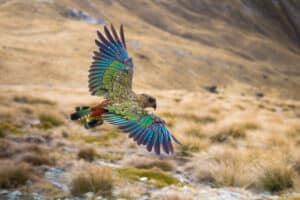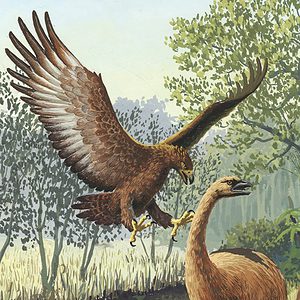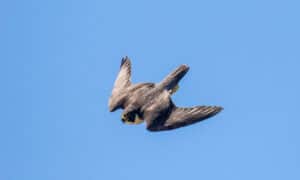Penguins refer to one of 18 species of flightless bird, found on every continent in the southern hemisphere. Only one species, the Galapagos penguin, has been found to exist in the northern hemisphere. Penguins come in a wide variety of sizes, ranging from a mere 15 inches to nearly four feet tall. They may weigh as little as two pounds or as many as 88 pounds.
A lot of their diet depends on their location and their size, but Penguins are all carnivores. Even if they wanted to eat other things, their taste buds have evolved to only detect the flavors of salty and sour, so they wouldn’t enjoy them much. In fact, Penguins typically swallow their food whole and don’t taste much of it at all. The males of some species can go as long as 120 days without food during breeding season, while they are mating and then nesting on their eggs.
These semi-aquatic carnivores hunt for their food either while swimming or through cracks in the ice. Emperor Penguins , the largest species, can dive as far as 1800 feet in search of prey and stay submerged for up to 20 minutes. They may travel hundreds of miles in search of prey. Not all species deep sea dive for their food, however, nor do they travel very far in search of it. Some prefer shallow swimming for their food and stick within a mile of their territory.
There is also one species of African Penguin, which only lives along the southern coast of Africa. These penguins do not have feathers around their eyes or on their legs, which helps them dispel heat. They live in large colonies along the rocky coastline. They eat 25 species of fish, such as sardine and anchovy but also prey on squid and krill.
If they make it through their first year of life, a penguin has an average life expectancy from 15-20 years. They have predators both on the land and in the sea. The land threats include foxes , snakes , wild cats or dogs, and birds of prey, all of which primarily go after eggs and young chicks. In the sea, adult Penguins may be eaten by sharks , seals , killer whales or sea lions . The biggest threat to Penguins is humans, from loss of habitat from climate change and from loss of diet caused by overfishing and pollution.
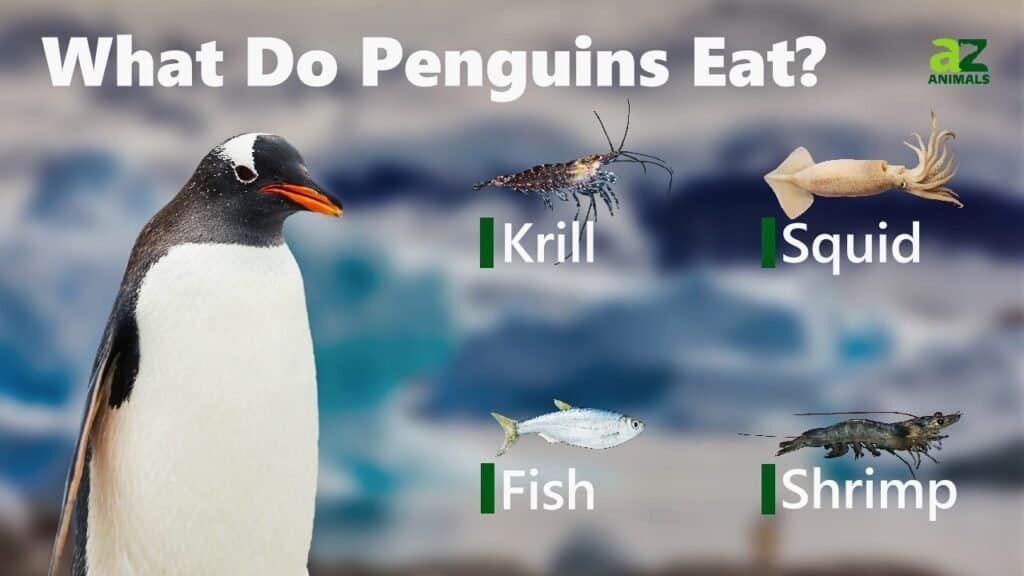
What Does a Penguin Eat?
All 18 species of these birds are carnivorous. Penguins eat primarily fish, with other seafood thrown in the mix depending on the location of the species. They eat crustaceans, cephalopods, and fish of all shapes and sizes, though smaller fish make up the bulk of most species’ diet.
What Do Penguins Eat at the Zoo vs in the Wild?
While the bulk of a wild penguins diet consists of fresh live fish and seafood, swallowed whole, a penguin in captivity will usually be fed dead and often frozen fish, supplemented with sliced pieces of fish. This is done not only for cost reasons, but also to maintain diet consistency.
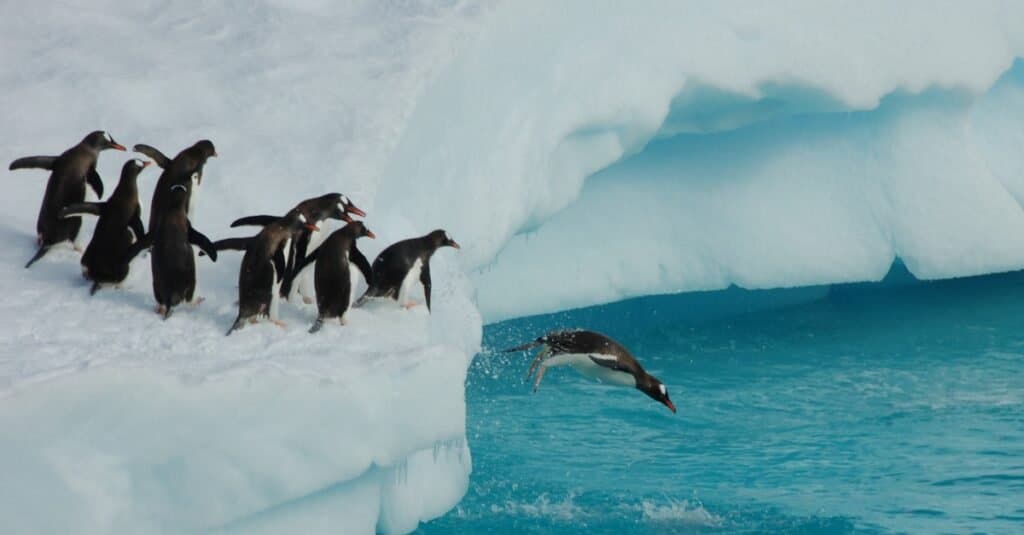
©Ronsmith/Shutterstock.com
A Complete List of the Foods a Penguin Eats
- Small fish, including anchovies , sardines , sprats, cod and mullet make up the bulk of most penguin species’ diet.
- Cephalopods, such as squid and cuttlefish are often eaten by larger penguin species.
- Crustaceans, including krill , crab , and shrimp make up a small portion of the diet of smaller penguin species.
Up Next
- Are Penguins Mammals? How much do you know about penguins? Are they birds? Mammals? Find out here.
- 10 Incredible Penguin Facts Penguins aren’t just cute, they are also very interesting animals. Check out this article to find out more.
- Do Penguins Have Teeth? We know what they eat now but do we know how they eat? This will tell you.
The photo featured at the top of this post is © Giedriius/Shutterstock.com
FAQs (Frequently Asked Questions)
How often do Penguins eat?
Penguins eat every day, except during periods of fasting. Prior to fasting, they may eat more than normal and more often, in order to build up fat for the fasting period.
Do Penguins eat fruit?
No, Penguins are carnivores and do not eat anything but seafood. They don’t have sweet receptors on their taste buds, so they wouldn’t enjoy fruit even if they ate it.
How long can Penguins go without food?
Male penguins who sit on eggs can go up to 120 days without eating.
Thank you for reading! Have some feedback for us? Contact the AZ Animals editorial team.



